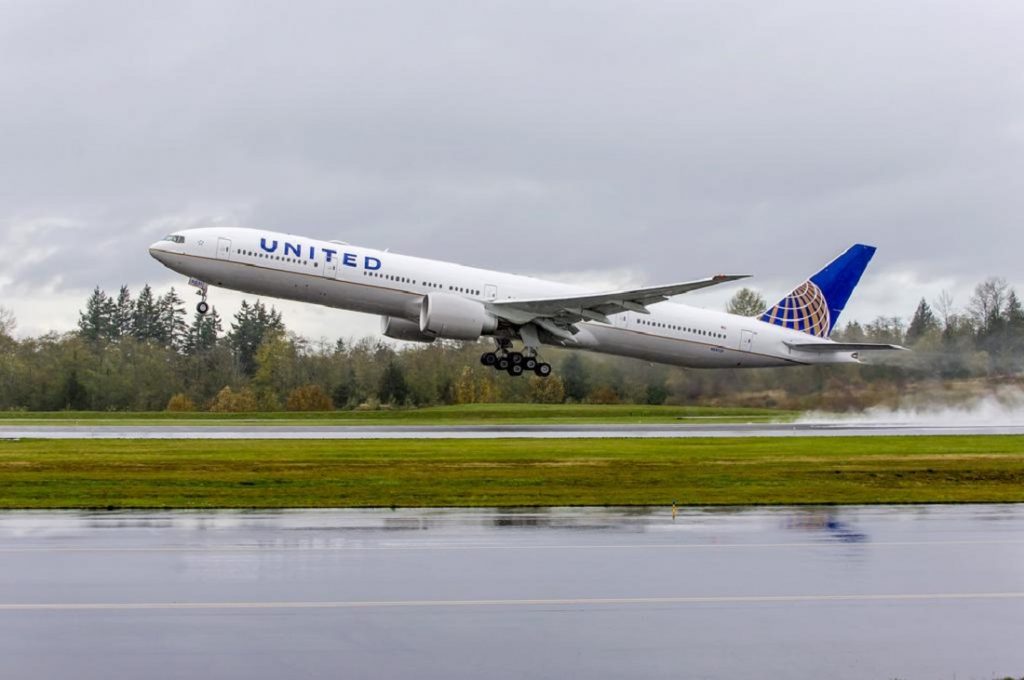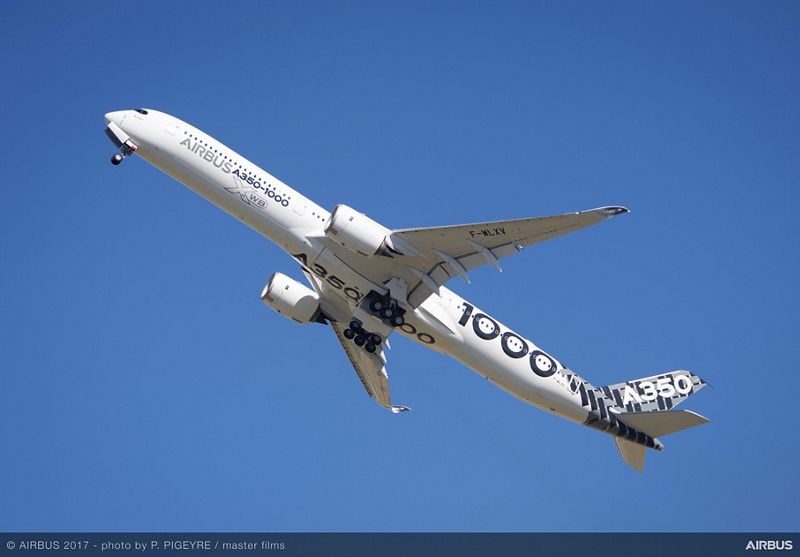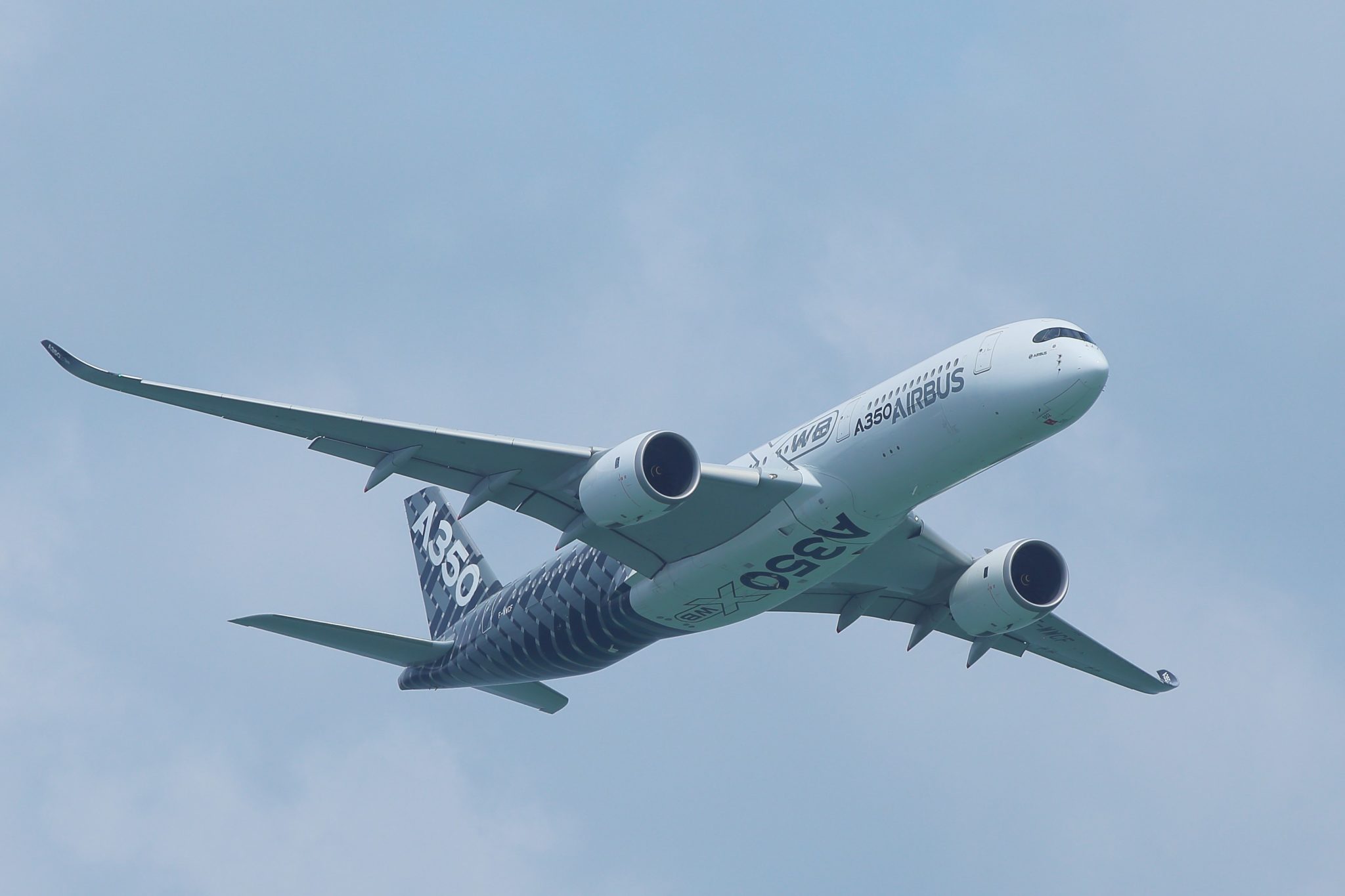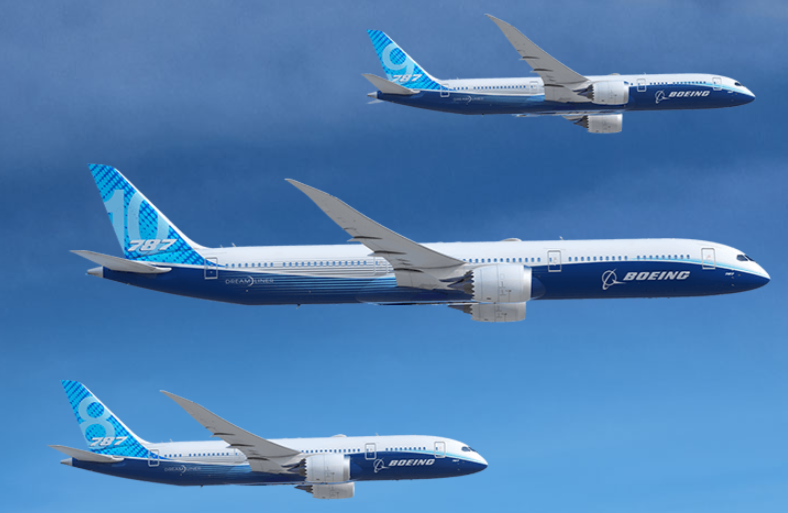Leeham News and Analysis
There's more to real news than a news release.
Airbus sees encouraging signs of wide-body demand recovery
Subscription required
By Scott Hamilton
Oct. 25, 2021, © Leeham News: Airbus sees some “encouraging” signs wide-body demand is recovering from the global COVID-19 pandemic.
Passenger demand is nearing-pre-pandemic levels in key areas of the world where single-aisle aircraft are used. Long-haul international demand remains suppressed, however. Some don’t forecast a return to normal for up to two more years. Others forecast a recovery on key routes next year.
Christian Scherer, the chief commercial officer for Airbus, is optimistic.
“I would say that on the wide-body market, you see encouraging signs,” he said during a press gaggle at the IATA AGM Oct. 3-5 in Boston. “Maybe that has to do with the fact that the ecosystem at large is realizing that the best thing they can do in the short- and medium-term, towards that whole global objective of sustainable air transportation is to equip themselves with the most fuel-efficient and therefore eco-friendly airplanes.
“I think that against that backdrop and the opening of more international corridors sees a regained interest on the wide-body side as well. Now it’s lagging the single arch really and there is no scoop here that rates in the long-range airplanes are going to change imminently, but the general sentiment is positive on the wide-bodies as well and that’s really good.”
Single or twin Aisle for cargo rich routes?
Subscription Required
By Vincent Valery
Introduction
Oct. 21, 2021, © Leeham News: LNA started the cargo-themed series by comparing factory and converted freighter aircraft performance. We followed with the comparison of cargo capacity for different passenger airliners with the same low number of passengers.
The latter showed that freight revenues alone could justify operating a larger variant despite lower passenger load factors. We now continue the cargo-themed series from a different angle.
Several countries, notably the United Kingdom, United States, and Singapore, re-opened quarantine-free travel for non-residents who received a COVID-19 vaccine. After more than 18 months of depressed passenger traffic, airlines are hopeful long-haul traffic will finally restart in earnest.
It will probably take a few more years until long-haul traffic fully recovers to pre-pandemic levels globally. With that in mind, airlines need to decide how to rebuild their long-haul networks gradually.
Launched a few months before the COVID-19 pandemic, the A321(X)LR seems an ideal aircraft to test the market before committing to larger aircraft. LNA has extensively written about the pre-COVID-19 long-haul market fragmentation with the smaller twin-aisle (A350 and 787) and higher-range single-aisle (737MAX and A321LR) aircraft.
However, is a long-range single-aisle aircraft always the best choice to rebuild a network when cargo prices are high? LNA will answer that question in the next part of the series.
Summary
- A pre-COVID19 fragmentation momentum;
- Pandemic turns long-haul business upside down;
- The appeal of long-range single-aisle aircraft assumes normal cargo prices;
- What a single-aisle airplane can’t provide.
Air freight demand explosion: a long-term trend?
Subscription Required
By Judson Rollins
Introduction
October 18, 2021, © Leeham News: Much ink has been spilled over the surge in demand that has washed over every corner of the cargo world: air, sea, road, and rail.

Amazon Air’s first parcels being unloaded at Amazon.com’s new Cincinnati (US) sort hub. Source: Amazon.com.
Before the COVID-19 crisis, air transport was reserved primarily for items with high value and/or time sensitivity, such as laptop computers or express documents. And growing competition in the cargo market meant that average yield (revenue per ton-mile) was declining by more than 2% per year, according to past editions of Boeing’s World Air Cargo Forecast.
But now the cost of sea transport has exploded, shifting a significant chunk of cargo from ocean freighters to their airborne equivalents. This is driving some retailers to use air transport. Home Depot, an American home-improvement retailer, is resorting to air freight to bring in smaller, higher-value items like power tools that it needs to keep on the shelves at all times.
Even before COVID-19, a growing share of air freight has come from e-commerce — thereby shifting the volume-to-weight considerations relative to “traditional” freight.
Will these trends continue even beyond the COVID crisis? And what impact will it have on the market for factory-built freighters and passenger-to-freighter (P2F) conversions?
Summary
- Soaring sea freight yields mean small shipments are now more economic by air than sea.
- Volumetric capacity matters more than max gross weight.
- New freighter options will compete with a glut of conversion feedstock.
- Air freight yields will eventually revert to historical trendlines in most regions.
With high cargo prices, will airlines fly larger aircraft in their widebody fleets?
Subscription Required
By Bjorn Fehrm
Introduction
October 14, 2021, © Leeham News: Over the last weeks, we’ve seen that the present cargo crunch and high yields will influence what aircraft variants airlines purchase. Models that are too large passenger-wise for years to come will be paid for by a longer belly that can take more cargo.
This trend will remain as long as cargo prices are high. Will the high cargo yields also affect what aircraft to keep stored and which to fly of an existing fleet? We apply the analysis to an airline with a fleet of Boeing 777s.
Summary
- The increased yields for air cargo changes the fleet planning for the widebody fleet. The most suitable passenger models stay in the desert, and the longer siblings fly despite lower load factors.
The Regional Aircraft Fleet
Subscription Required
By Vincent Valery
Introduction
Oct. 11, 2021, © Leeham News: The regional aircraft market, defined as aircraft seating 100 or fewer passengers in standard configurations, has fewer OEM players than before.
The Bombardier CRJ, purchased by Mitsubishi Heavy Industries, ceased production earlier this year. De Havilland Canada will stop Q400 production later this year once it clears its backlog. Both programs might not start production again in the future.
The only latest-generation design, the E175-E2, does not have a single firm order. (There is a conditional order for 100 from the USA’s SkyWest Airlines.) MHI’s SpaceJet development has been “suspended,” but nobody believes it will be restarted.
Therefore, the only regional aircraft in production for the near future will be ATR’s 42 and 72 series, COMAC’s ARJ21, Embraer’s E175-E1, and UAC’s SSJ100.
The ARJ21 and SSJ100 are almost exclusively in service in their respective domestic markets. In practice, that leaves only the ATR42, ATR72, and E175-E1 as new regional aircraft in production for most operators from next year.
However, it is far from guaranteed that ATR and Embraer will enjoy near-monopoly status for the foreseeable future. Embraer has been pondering the launch of a turboprop program for years and is currently looking for an industrial partner.
One also must mention that potential jet fuel alternatives, notably hydrogen-powered aircraft, are likely to come to the regional market first. Therefore, the regional aircraft market could see some significant changes.
With the above in mind, LNA thought it relevant to look at the in-service regional aircraft, both for regional jets and turboprop aircraft.
Summary
- Segmenting the regional aircraft market;
- Regional jet and turboprop prevalence;
- Breakdown by OEM and operator region;
- Age of in-service fleet.
Is the cargo capacity deciding the airliner variant? Part 3.
Subscription Required
By Bjorn Fehrm
Introduction
October 7, 2021, © Leeham News: In last week’s article, we could see today’s high cargo prices can motivate a 325 seat Airbus A350-900 even though the passenger load on the routes would point to a 240 seat A330-800.
How far does this “paying for a larger aircraft with belly cargo” paradigm go? Today we see if Airbus’ largest aircraft, the A350-1000, can generate the margins of the A350-900 on freight-rich routes. Can an airline that has an A350-900 sized passenger demand for such routes go to an A350-1000 instead?
Summary
- The increased yields for air cargo leads to surprising effects. Oversized passenger models can survive the passenger drought on today’s international routes as long as it’s a route with good freight demand.
IATA AGM: Airplanes, engines SAF capable coming; feedstock lags by years
Subscription Required
By Scott Hamilton
Introduction
Oct. 4, 2021, © Leeham News: Engine and airframe makers are well on their way to becoming fully capable of using Sustainable Aviation Fuel (SAF). But the industries providing SAF are way behind in meeting the potential demand.
Rick Deurloo. Sr. VP & Chief Commercial Officer at Pratt & Whitney said one major US airline would use all currently available SAF in one day.
“The challenge will be the feedstock. How do we grow that technology or grow that ability to provide the feedstock so when we do have 100% SAF-capable aircraft and engines, we have the energy to go with it?” Deurloo said in an interview with LNA at the IATA AGM this week in Boston.
Airlines around the world are partnering with different companies to develop this technology, he said.
PW is already 50% capable and has a “clear path” to getting 100% capable within two years. But there is not enough feedstock in the world today do fill the 50% capability.
Is the cargo capacity deciding the airliner variant? Part 2.
Subscription Required
By Bjorn Fehrm
Introduction
September 30, 2021, © Leeham News: In last week’s article, we put the question: Has the increased cargo pricing started to affect the choice of airliner variant?
We analyzed Boeing’s 787-8 and -9 for margin generation when flying at low post-pandemic load factors. We found the 787-9 is the more attractive alternative as long as air cargo pricing stays high, even though the passenger load factor on the route would motivate a 787-8. The revenue from under the floor cargo compensates for a low load factor in the cabin. Now we subject the Airbus range; A330neo, and A350 to the same analysis.
Summary
- The trend from last week continues. Variants with high cargo capacity can sustain lower load factors while generating the same margin on routes.
- This article develops the passenger load factors where the margin generation is the same between Airbus widebodies.
777 freighter conversion methods and their differences
Subscription Required
By the Leeham News Team
Sept. 27, 2021, © Leeham News: The race for the Boeing 777 P2F Freighter conversion is on.
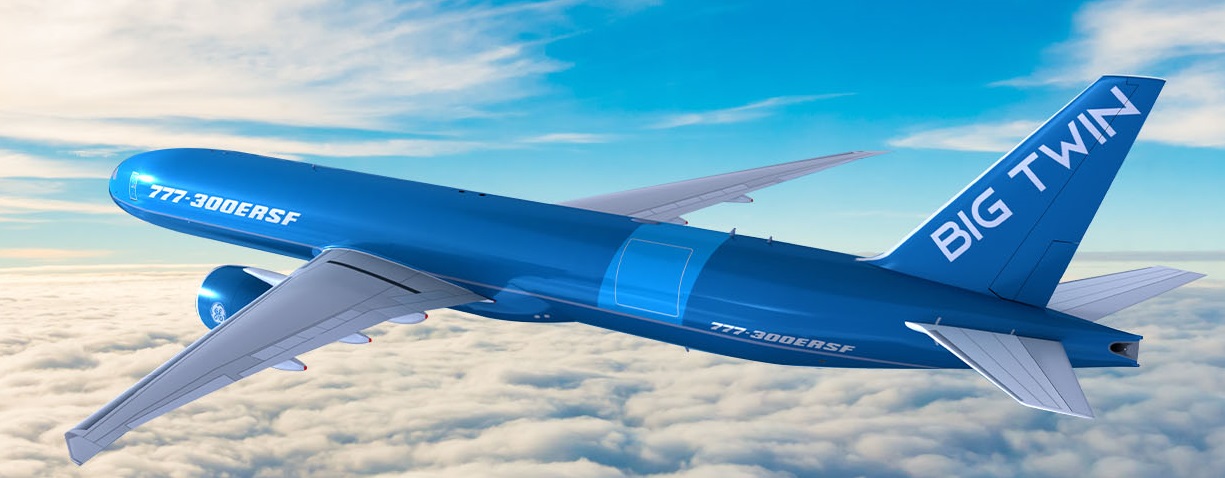
IAI Bedek Big Twin Boeing 777-300ERF passenger-to-freighter conversion. Lessor GECAS, now part of AerCap, was the launch customer of this, the first 777 P2F program. Source: IAI Bedek.
There are three companies in various stages of development. The first, IAI Bedek, announced its conversion process in 2019 with an order from the giant lessor, GECAS (now a part of AerCap). The second is a program driven by Nair Werx of Wichita (KS) and marketed by Sequoia Aircraft Conversions. The third is the recently announced Mammoth Freighter Conversions of California and Florida.
IAI has cut metal. Mammoth is test-flying a 777-200LR for stress and technical analysis. NAIR is in the pre-production Engineering Phase.
Let’s take a moment to understand the process of a P2F Conversion.
Is cargo capacity deciding the airliner variant?
Subscription Required
By Bjorn Fehrm
Introduction
September 23, 2021, © Leeham News: In last week’s article, we put the question: Has the increased cargo pricing started to affect the choice of airliner variant?
We listed recent decisions between the Boeing 787-8 and -9 or Airbus A330-900 and A350-900 where the traffic levels post-pandemic would motivate the smaller variant, but the larger was retained or selected.
It makes you wonder whether the higher cargo capacity of the larger variant compensates for flying a larger cabin at a lower load factor? We make a cost and revenue analysis to find out.
Summary
- Cargo was an additional revenue stream on top of the main source, the passenger traffic.
- The lower traffic levels for international long-haul traffic and the increase in cargo pricing have changed this. Cargo is now as important in the decision of which aircraft to choose as the passenger capacity.



